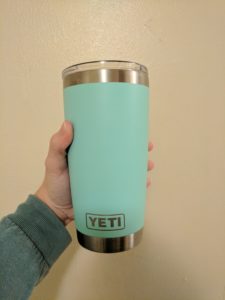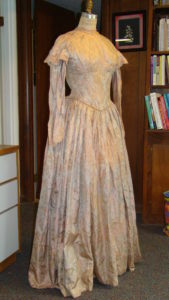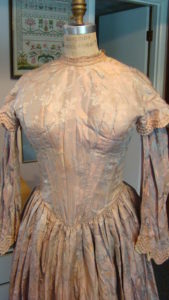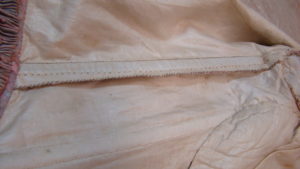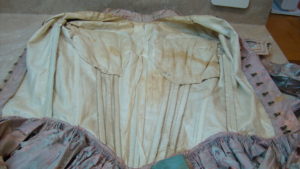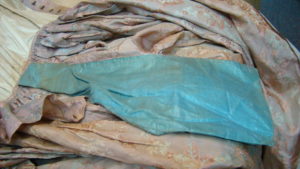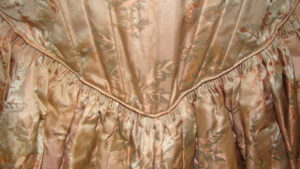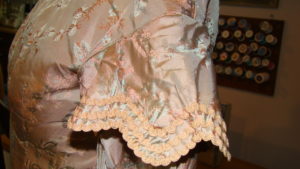An object deserving of additional study that is part of my daily life is my insulated YETI brand tumbler. The outside surface is a lightly textured seafoam green color and the entire inside is smooth, stainless steel. The cup is used almost exclusively with a clear plastic lid of the same brand. It can hold twenty ounces of liquid and weighs approximately three pounds. The cup is around eight inches tall and three inches in diameter. Notably, it is heavily insulated and vacuum-sealed. It is double-walled stainless steel, which supports its utilitarian value. It is used for both hot and cold beverages and keeps them at the desired temperature for an inordinate amount of time. The manufacturer’s logo is prominently displayed twice on the bottom sides of the cup and again on the base of the cup, as well as on the lid.
The cup was designed by the YETI Company in Texas, but manufactured in China. Since it is a cup, I mostly use it for drinking liquid, but occasionally will eat cereal out of it in lieu of a bowl. It also has the potential to hold items such as pens and other similarly shaped objects. Cups or tumblers such as this are not rare. Cups of this brand and similar cups of different brands are ubiquitous, especially on a university campus. The YETI Company began manufacturing tumblers such as this in 2014, and I was given my tumbler as a birthday gift in May of this year.
This object has clear utilitarian value. Its insulation allows me to drink iced coffee on the hottest of days without worrying that my coffee will become warm, or that the ice will melt. I also use it to drink water, which remains insulated and cool to drink. Another aspect of its utilitarian value is its reusability. This is important because I believe in reducing the amount of waste that I create by using reusable objects such as this tumbler. The reusability of this cup also indicates that it has social and cultural value to people who share the same desire for sustainability. It has sentimental value as well because I received it as a gift from someone I love. The object has cultural value because the YETI brand is popular among college students and in college towns. It is also seafoam green, which is also a popular color among people in my age demographic.
I use this cup every day to drink both water and coffee, and I carry it with me to campus often. When I am not carrying it with me, it resides either in the kitchen near the refrigerated water filter or on my bedside table. In a century, any historian can use my tumbler to infer that I drank beverages pretty regularly, and that insulation was an important factor in my choosing a cup for daily use. They could also infer that this particular cup was chosen for its brand name and color, as both are popular within campus culture.
